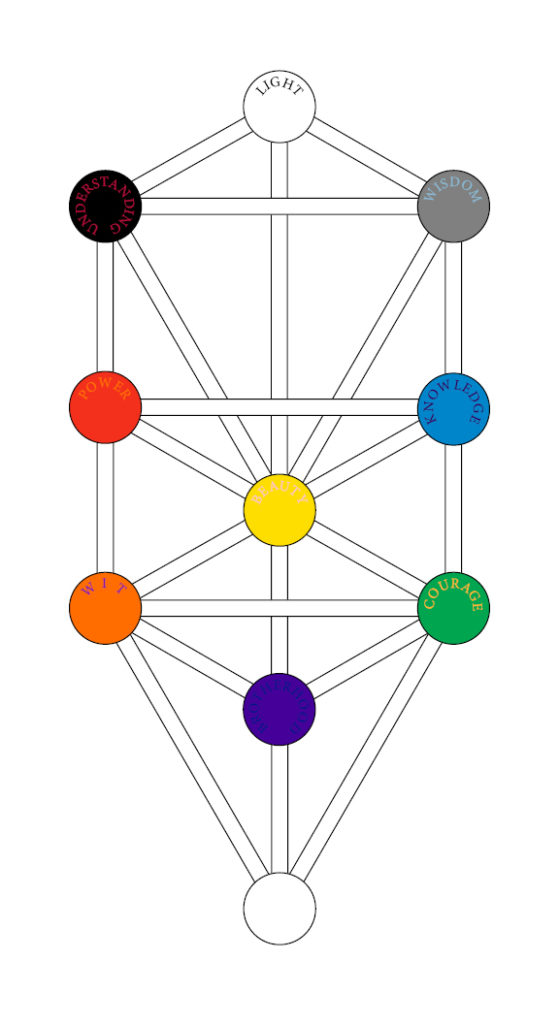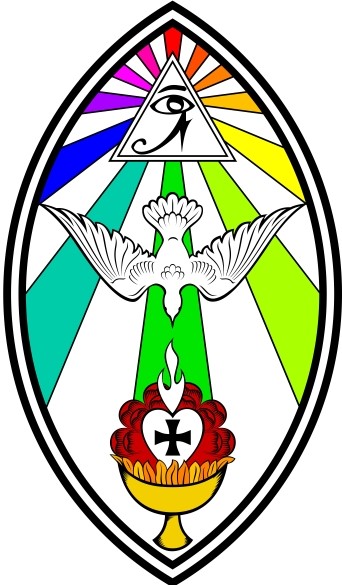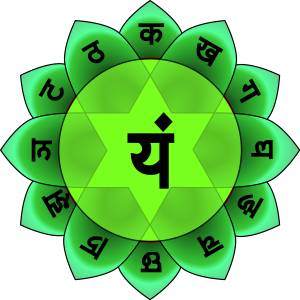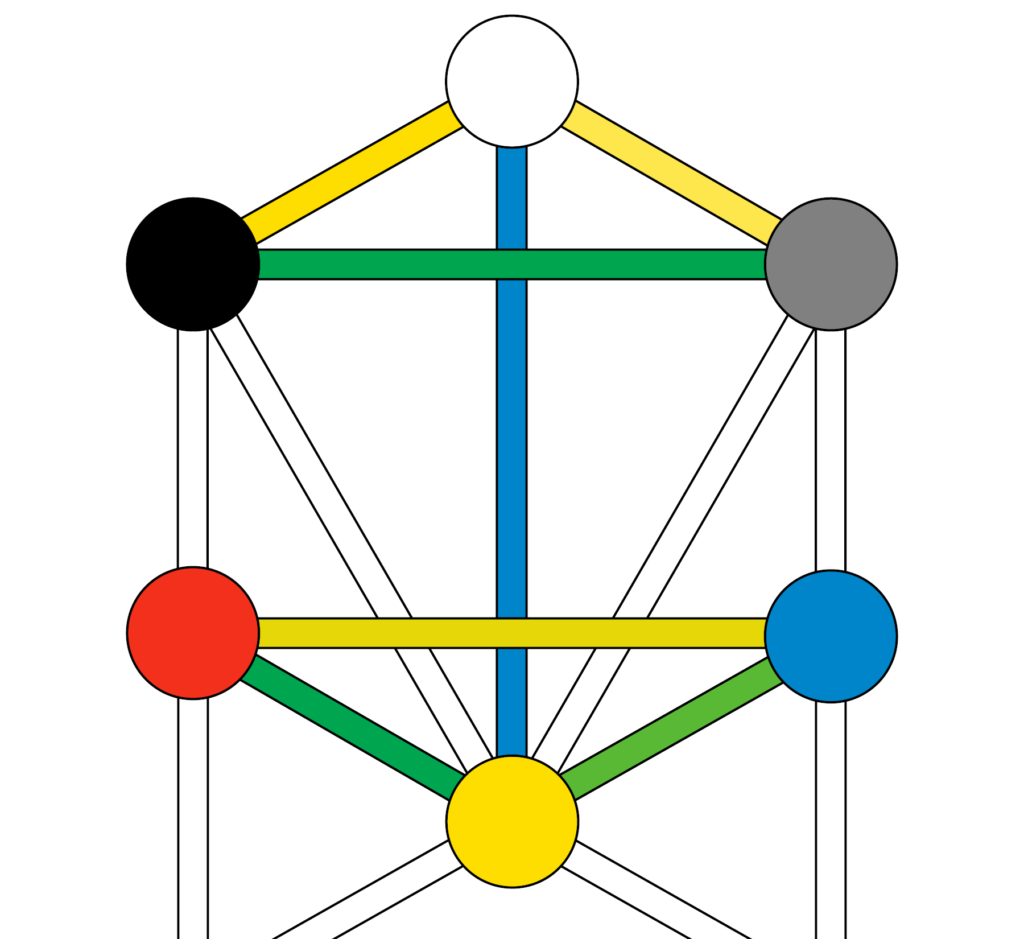There are two problems I see with the view that O.T.O. should not teach an orthodoxy.
Thelema and Secularism
The idea that truth—spiritual or otherwise—reduces to personal truth isn’t “Thelemic” per se. It’s just secularism. That’s one of the defining stroke of the secularist worldview.
The gift that unites us

The purpose of any O.T.O. local body is to assist individuals to find their respective true wills and to promulgate Thelema. Differences in local culture notwithstanding, that’s what each lodge, oasis, or camp has a duty to do.
There are many ways individuals can interact with us. There are the obvious ones like attend Gnostic Mass, take initiation, become a member, or serve as clergy.
There are the less obvious and perhaps less appreciated ones like washing glasses after Mass, taking out the trash, making a $5 donation, or even clicking “Like” on a social media post.
But all these ways of interacting with O.T.O. are done in service to our ultimate purpose, which is help individuals bring about positive life change by finding their true wills and to promulgate Thelema.
This is our unique gift. It is the impact that unites us. When we keep this cause at the forefront of whatever we do, we best serve our communal goals and thereby best serve ourselves as members.
Crowley elaborates on this supreme cause in a variety of ways. One of the most conspicuous—which appears both on the Preliminary Pledge Form and on the O.T.O. USA website—says that O.T.O. is:
…pledged to the high purpose of securing the Liberty of the Individual and his or her advancement in Light, Wisdom, Understanding, Knowledge, and Power through Beauty, Courage, and Wit, on the Foundation of Universal Brotherhood.
Like most things that Crowley writes, he is referencing the Holy Qabalah here. The concepts relate to the sephiroth in the following way:
- Light – Kether
- Wisdom – Chokmah
- Understanding – Binah
- Knowledge – Chesed (and arguably the whole of the Ruach as comprehended in Daath)
- Power – Geburah
- Beauty – Tiphareth
- Courage – Netzach
- Wit – Hod
- Foundation of Universal Brotherhood – Yesod

This is a useful way to think about the means by which we assist individuals and promulgate the Law of Liberty.
Here is just one way to think about these means:
Light: While the light represented by Kether (Ain Soph Aur) is unlimited and therefore without opposition, it is helpful to convey this concept to our minds in opposition with darkness. We confront the darkness of the human condition when we find ourselves groping for solutions to barely understood problems. Light represents clarity about fundamental reality that comes from understanding the Law of Thelema. It is knowing that whatever difficult situation we find ourselves in, there is a solution, and that solution is to know and to do one’s true will.
Wisdom is the ability to put that solution into action based on life’s experience. A large part of that is “minding one’s own business,” i.e., making the development of one’s own true will the center and theme of one’s life without being overly concerned with the opinions of others. As a society of individuals pursuing different paths, O.T.O. offers many opportunities to practice this kind of discernment.
Understanding entails the rejection of superstition. One cannot simply will for an end to skepticism. Its end is only achieved in samadhi or in mystical union with the Divine through meditation and prayer. Short of that, ultimate reality cannot be known in and of itself. We therefore practice tolerance as a way of life. When we embody this value in our lodges, oases, and camps, we invite a great diversity of points of view, life paths, and backgrounds, thereby enriching our communities and promoting maximal growth through the intersections of these points of view.
Knowledge: We promote scientific religion. We do not demand that individuals accept premises without sufficient evidence. As a result, we do not place arbitrary restrictions on individuals’ advancement in our organization or in their self-development. Instead we give them the tools necessary for growth and fulfillment.
Power: We emphasize self-empowerment and self-control over the control or manipulation of others. We recognize that the greatest power comes from individuals having the maximum amount of control over their own lives, including their physical and emotional impulses. We align ourselves with those who reject coercion and tyranny in all its forms.
Beauty: Our spirituality is not merely private or mystical in nature. Magick is meant to create harmony between the desires of individuals and the world around them. Our spirituality is therefore sensuous in nature, as beauty is the image of the reconciliation between what is and what ought to be. We perform our rituals rightly, with joy and beauty.
Courage is not freedom from fear but rather the capacity to withstand, to carry, and to act appropriately even while experiencing fear. We do not promise that every step along this path is going to be warm cookies and ice cream. But we do provide opportunities—through initiation and through fraternity—to learn and to practice courage, truthfulness, and other forms of emotional intelligence.
Wit is the capacity to think quickly, to know how and when to apply concepts. O.T.O. consists in a diverse group of individuals from many backgrounds. As such, there are many opportunities for novel forms of interaction. Novelty throws us back on our own resources. It demands spontaneity rather than repetition. In other words, it requires learning.
Universal Brotherhood (or Sisterhood or Siblinghood as we now say) is both the foundation of all that precedes as well as its natural culmination, just as Yesod is both the “foundation” of the Tree of Life as well as the natural endpoint on the astral plane of any magical current. It is an image of the world in which the gifts inherent in all Points of View are capable of manifestation and expression to the ultimate. It is the world we are attempting to create by bringing about life change, one individual at a time.
As Crowley says in the essay “Man” in Little Essays Toward Truth:
The Quest of the Holy Grail, the Search for the Stone of the Philosophers—by whatever name we choose to call the Great Work—is therefore endless. Success only opens up new avenues of brilliant possibility. Yea, verily, and Amen! the task is tireless and its joys without bounds; for the whole Universe, and all that in it is, what is it but the infinite playground of the Crowned and Conquering Child, of the insatiable, the innocent, the ever-rejoicing Heir of Space and Eternity, whose name is MAN?
This is merely a small sample of all the ways in which O.T.O. bodies give the gift of life change with the purpose of securing liberty and free expression of all individuals. These are the gifts we should leverage for our self-development and for the growth of our communities.
What other ones can you think of?
The Symbolism of the O.T.O. Lamen

I spent a lot of time this weekend contemplating the lamen of O.T.O. (I was at a Kaaba Colloquium and seated much of the time in front of the podium.) It gave me some time to think about the symbols that appear in it.
One of the things that really struck me is how much symbolism of the Anahata chakra there is in the cup at the bottom of the sigil. The rose in the cup has two rows of six petals. The Anahata chakra is often represented as a lotus flower with twelve petals.

In the center of the rose is a flaming heart. The Anahata chakra is located in the center of the chest and is referred to the heart.
In Liber 777 column CXVIII, “Anahata (Heart)” is assigned to keys 4, 5, and 6, the Sephiroth Chesed, Geburah, and Tiphareth. Tiphareth is the 6th Sephira, and there are two rows of six petals each in the cup. In the center of the heart in the center of the rose, we see the cross. The mysteries of the Rose and the Cross are also associated with Tiphareth.
These three Sephiroth—Chesed, Geburah, and Tiphareth—form a downward pointing triangle, the interconnecting paths of which (Teth, Lamed, and Yod) add up to 49. The number 49 has a few occult meanings in Thelema. For example 49 is 72. Seven 7s appear in the sigil of A∴A∴. See also The Book of Lies, Chapter 49, where it is associated directly with Babalon.
This triad is also called “The Second Triad which is GOD” in Book of Lies chapter 0. The Tiphareth portion in particular is God in manifestation or Microprosopus, which we will return to later.
It’s also in this connection worth pointing out that the triangle formed by connecting Chesed, Geburah, and Tiphareth has the shape of a cup. This further strengthens its connection with Babalon and by extension the Priestess in the Gnostic Mass who fulfills the office of Babalon.
This grail of Babalon is also associated with Cheth, Cancer, and the number 69. In chapter 69 of The Book of Lies, we see this number associated with the Heavenly Hexagram, which we will return to shortly.
Switching focus to the Eye in the Triangle, we might associate it with the supernal triad of Kether, Chokmah, and Binah. They form a triangle whose interconnecting paths (Aleph, Beth, and Daleth) also add up to 7.
The eye itself can be thought of as the Eye of the Father, Horus. So while the lower portion of the lamen might be referred to the Priestess (by means of Babalon and the cup), the upper portion may be referred to the Priest.
The eye is also linked to the path of Ayin (which means “eye”). Like Cheth, Ayin also contains masculine and feminine archetypes, being associated with the hermaphroditic Baphomet. Neither the lamen of O.T.O. nor the offices of the Gnostic Mass imply strict gender dualities. This is in keeping with Crowley’s assertion in The Book of Thoth that
At first sight it would appear that the formula [of tetragrammaton] is the union of the extremely masculine, the big blond beast, with the extremely feminine, the princess who could not sleep if there was a pea beneath her seven feather beds. But all such symbolism defeats itself; the soft becomes the hard, the rough the smooth. The deeper one goes into the formula, the closer becomes the identification of the Opposites. The Dove is the bird of Venus, but the dove is also a symbol of the Holy Ghost; that is, of the Phallus in its most sublimated form. There is therefore no reason for surprise in observing the identification of the father with the mother.
We will return to his passage and the symbolism of the dove shortly.
The addition of Ayin (70) to the triangle itself (7) gives us 77, which has some significance in the context of O.T.O. being the enumeration of OZ, a goat.
So what we see in the two extremes of the lamen are the supernal triad of Kether, Chokmah, and Binah opposed to the triad of Chesed, Geburah, and Tiphareth. While the upper triangle refers to an active masculine-feminine (Ayin, OZ, the goat), the bottom triad refers to a passive masculine-feminine (Babalon, who receives every drop of blood in her cup). What about the dove between the two of them, seen descending from the Eye in the Triangle into the cup?
The dove has lots of significance loaded into it. By column XXXVIII in Liber 777, it is associated with the path of Daleth. The dove would then signify the divine love uniting the active masculine-feminine magical pole of the Priest (in his role as Chaos or Yod tetragrammaton) with the passive masculine-feminine magical extreme of the Priestess (in her role as Babalon or Heh tetragramaton). This unification occurs at the HRILIU moment of the Gnostic Mass. According to Liber 418, HRILIU is the “shrill scream of orgasm”. In The Heart of the Master it is described as “The Voice of the Dove”.
The dove is also symbolic of the Holy Spirit. (See Matthew 3:16, Mark 1:10, Luke 3:22, and John 1:32.) This same equation between the dove and the Holy Spirit shows up in the Anthem of the Mass. (“Glory and worship in the highest, Thou Dove, mankind that deifiest”) (This analysis is extended here.) Like the two extremes of the lamen, it is a symbol containing both male and female aspects.
For of the Father and the Son
The Holy Spirit is the norm;
Male-female, quintessential, one,
Man-being veiled in Woman-form.
Crowley extends the analysis in the passage from the Book of Thoth quoted above when he says, “The Dove is the bird of Venus, but the dove is also a symbol of the Holy Ghost; that is, of the Phallus in its most sublimated form.”
So we can think of the dove not only as the divine love uniting the supernal father with the supernal mother, but also as the male-female creative force or word of the Father—his seed or sperma—transmitted into the womb of the Mother. This is reflected in the Mass when, breaking a particle off of the host and elevating it, the Priest declares, “TOUTO ESTI TO SPERMA MOU. HO PATÊR ESTIN HO HUIOS DIA TO PNEUMA HAGION.” (“This is my Seed. The Father is the Son through the Holy Spirit.”)
As I have shown previously, the particle of bread represents the Iota, Yod, or “Secret Seed” of the Priest himself. It is identical with the Lord Secret and Most Holy of the Mass, whose office is represented by the serpent crown. When this seed is depressed into the cup, it becomes the Holy Spirit, Harpocrates, the Babe in the Egg, the creative breath, all of which are captured in the symbol of the dove. But just as importantly, Harpocrates or the Secret Self is also the Holy Guardian Angel.
This is an important point of doctrine for our Church, as the Holy Spirit of Ecclesia Gnostica Catholica is not the Holy Spirit of Christianity. Rather, it is a symbol of the Holy Guardian Angel of each person.
This interpretation is supported if we extend the Tree of Life symbolism implicit in the lamen. If the Eye in the Triangle represents the supernal triad of Kether, Chokmah, and Binah, and if the flaming cup represents the triangle of Chesed, Geburah, and Tiphareth, then the path connecting the two of them, by means of which the dove descends, would be Gimel. Of this path, Crowley, in The Book of Lies chapter 42, says:
The Masters of the Temple … come from the Great Sea, Binah, the City of the Pyramids. V.V.V.V.V. is indicated as one of these travelers; He is described as a camel … because “camel” is in Hebrew Gimel, and Gimel is the path leading from Tiphareth to Kether, uniting Microprosopus and Macroprosopus, i.e., performing the Great Work. The card Gimel in the Tarot is the High Priestess, the Lady of Initiation; one might even say, the Holy Guardian Angel.

In this passage we have Crowley linking the path of Gimel not only with V.V.V.V.V. but also with the Holy Guardian Angel and the initiator. S/he (again, we see the masculine and feminine combined) is the One who mediates between the divine individual (microprosopus) and the supernal divine (macroprosopus), thereby enabling the candidate to perform the Great Work. This is the upward path, the Path of Return described in “One Star in Sight,” whereby the Son (the Angel) sets the Daughter (the aspirant) on the throne of the Mother (Binah).
But in the symbolism of the O.T.O. lamen, we do not see a journey upward. Instead, we see a journey downward. We see the dove of the Holy Spirit or the Holy Guardian Angel descending from the supernal triad of the Father into the cup, which is symbolic of microprosopus, God in manifestation. And again, this mirrors the symbolism of the Holy Hexagram we see described in The Book of Lies chapter 69: “Plunge from the height, O God, and interlock with Man!” The whole figure is described as a glyph of “the Great Work”.

So in other words, in the lamen of the O.T.O., we are witnessing a symbol of the Great Work, this time not from the point of view of the candidate aspiring to Binah, but rather from the point of view of macroprosopus incarnating by means of the Holy Guardian Angel. Again, “This is my Seed. The Father is the Son through the Holy Spirit.”
This symbolism further reflects and reinforces my interpretation of Part VIII of the Gnostic Mass. Assuming the O.T.O. lamen has any connection with the central private and public rite of O.T.O., then the lamen indicates the same process at play in the Gnostic Mass where, by isolating the Secret Seed of himself, the Priest, in his role as Chaos, is incarnating his own Holy Guardian Angel. By consuming it, he is uniting himself with his HGA. The congregants are doing the same thing except perhaps in a more attentuated way. This seems to me the best way to make sense of Crowley’s claim in Magick in Theory and Practice chapter XX that:
[By doing eucharistic magick t]he magician becomes filled with God, fed upon God, intoxicated with God. Little by little his body will become purified by the internal lustration of God; day by day his mortal frame, shedding its earthly elements, will become in very truth the Temple of the Holy Ghost. Day by day matter is replaced by Spirit, the human by the divine; ultimately the change will be complete; God manifest in flesh will be his name.
This is the most important of all magical secrets that ever were or are or can be. To a Magician thus renewed the attainment of the Knowledge and Conversation of the Holy Guardian Angel becomes an inevitable task; every force of his nature, unhindered, tends to that aim and goal of whose nature neither man nor god may speak, for that it is infinitely beyond speech or thought or ecstasy or silence. Samadhi and Nibbana are but its shadows cast upon the universe.
But then if this same process is also reflected in the O.T.O. lamen, then it stands to reason that the central secret of O.T.O. probably also involves this same mystery of the incarnation of the Angel.



